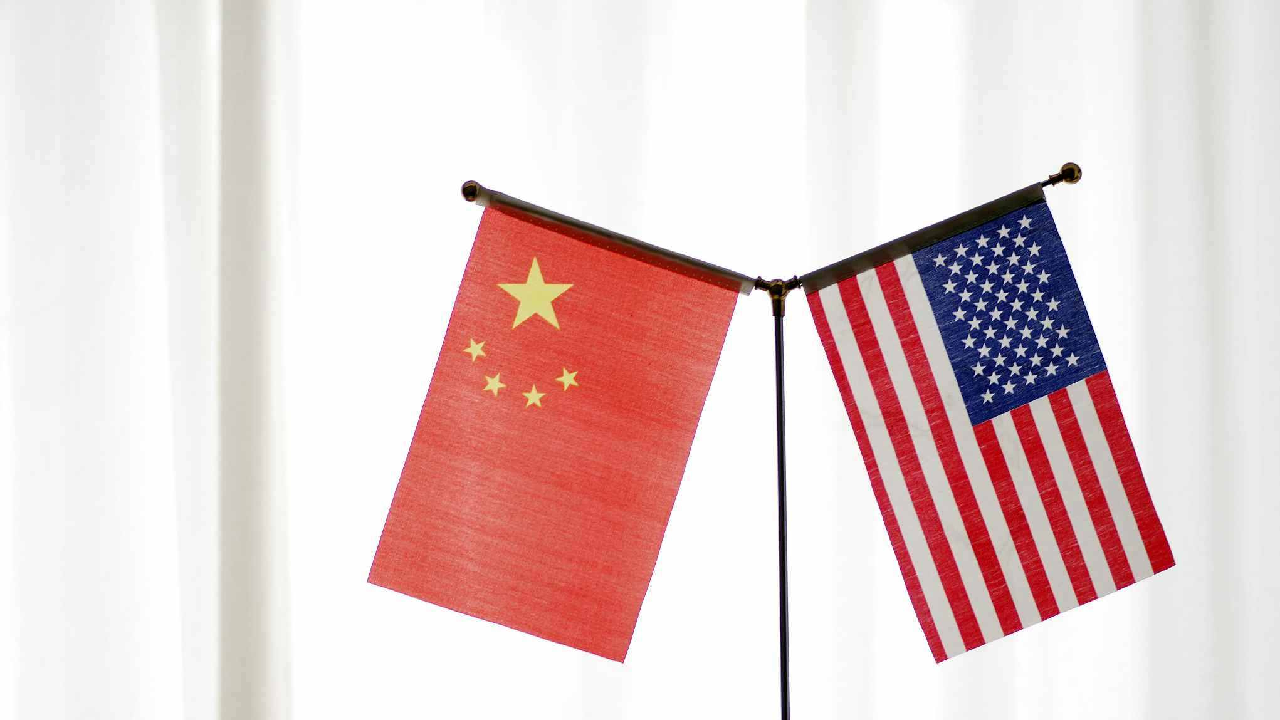
Editor's note: Hannan Hussain is a foreign affairs commentator and author. He is a Fulbright recipient at the University of Maryland in the U.S., and a former assistant researcher at Islamabad Policy Research Institute. The article reflects the author's opinions and not necessarily the views of CGTN.
In their first telephonic exchange since U.S. President Joe Biden took office, Chinese Vice Premier Liu He and U.S. trade Representative Katherine Tai marked a sea change in conversation from earlier years. Their joint acknowledgment of a consequential trade relationship, balanced recognition of issue areas, and candid introductory discourse were aptly captured by the desire to sustain communication and advance future discussions. Fostering that intent will be vital in any subsequent China-U.S. trade talks, which could entail a transition towards more complex issue areas and a growing emphasis on achieving results.
The exchange arrives at a time when both Beijing and Washington are interested in seeing the phase one trade agreement through. One reason why the deal presently eludes performance evaluation is because rounds of unilateral sanctions challenge its spirit. Recall the nature of the phase one deal: synchrony defined Washington's reduction in tariffs and China's purchase commitments on U.S. agricultural goods. True to both were bilateral consultations that struck at the heart of the deal's enforcement mechanism. Rounds of sanctions and export-control measures gaining precedence over the deal's promise were never the root of the consensus.
These underlying variations could only come to the fore if Washington sees a constructive opening on May 27's exchange and joins Beijing in extending focused scrutiny on the deal's initially agreed contours. This way, both sides are better positioned to address irritants hampering mutual goal fulfillment.
In the absence of a candid and constructive exchange, consider U.S. tariffs on about $370 billion in yearly Chinese imports, the escalatory measures haven't seen the degree of movement in Washington which they should advance the deal's implementation and help differentiate the current U.S. standard of compliance from the past administration. Such distinctions, when probed in exchange's spirit of equality and mutual respect, can lend credibility to multi-stakeholder interests under the phase one umbrella: exactly how Washington aims to assess the deal by "backing up a path forward," China's expectations on level-playing conditions for phase one deal implementation, and greater visibility for Chinese and U.S. companies inclined on roundly multilateral measures.
To be clear, it is not unnatural for countries to have differences. In fact, more than half a dozen provisions spanning the length of the phase one deal were negotiated to blunt the effects of exactly that: intractable trade differences. The real complication is the tendency of administrations to undercut bilateral trade consultations and characterize economic and political competition as the "dominant paradigm" to dictate what is acceptable, as opposed to what is possible.
Placed in the context of China-U.S. relations, inaction on sticking points such as unilateral tariffs has frequently been justified as "leverage''. It is here that the exchange and its build-up – both reflect some understanding that the longer a pertinent trade discourse is kept on the back-burner, the more challenges it could present in tackling bilateral trade issues directly.

Katherine Tai, U.S. trade representative, listens during a Senate Finance Committee hearing in Washington, D.C., U.S., on Wednesday, May 12, 2021. /Getty
Katherine Tai, U.S. trade representative, listens during a Senate Finance Committee hearing in Washington, D.C., U.S., on Wednesday, May 12, 2021. /Getty
On the former, an aura of presumed friction was spared on May 27's exchange because neither side mentioned trade tariff sticking points or the phase one deal status. Such an introductory transition is important to effectively compartmentalize negotiable and nonnegotiable aspects of trade relations in late-stage discussions, given how hostile openings in the past have cast an unnecessary shadow on diplomatic tact.
On the other hand, the lead-up to the exchange also suggested that the China-U.S. economic relationship will acquire part of its examination from phase one deal exchanges. In an interview with Reuters, Tai said that the phase one deal under Biden must be construed in the context of "in its trade and economic relationship with China, which requires attention across the Biden administration." Put simply, if subsequent discussions end up illuminating distinct perspectives on the deal and the China-U.S. trade trajectory as a whole, it makes it possible to identify what either side reads as a credible strategic justification for the future.
For China, the build-up to the call was different because it was fully consistent. Beijing has long advocated for a constructive and practical approach to trade relations with the U.S. and construes a level-playing field as one that effects a shift in counterproductive tariffs and targeted unilateral sanctions on Chinese companies. But despite these legitimate reservations, Washington hasn't been viewed on a different footing by Beijing, nor has a possible calibration in the former's strategic choices been refused optimism.
Thus, the introductory exchange between Liu and Tai struck a much-needed positive note on these basics of diplomatic conduct. As long as the fundamentals of diplomatic tact are made visible in subsequent talks, neither side should have much trouble bringing its strategic rationales and trade commitments to the table.
(If you want to contribute and have specific expertise, please contact us at opinions@cgtn.com.)

